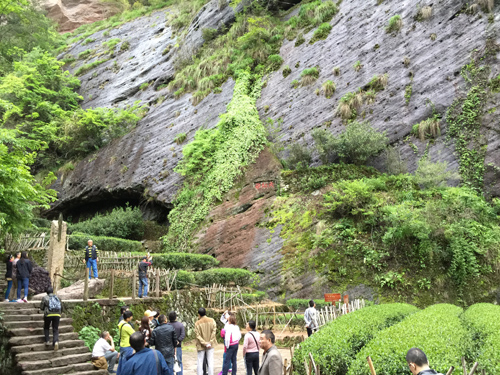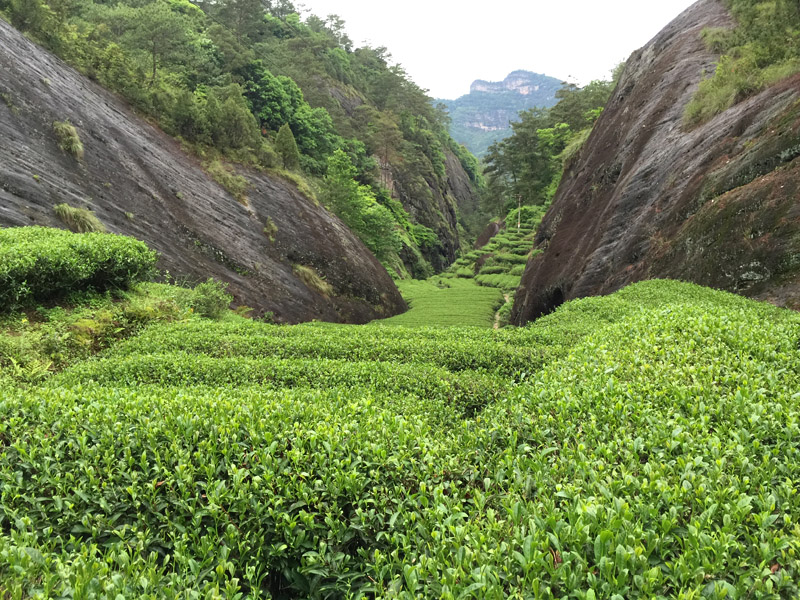Element # 4 – Origin
Disclosing origin is essential to authenticating a tea. So it follows that a specialty tea’s origin should be clearly labeled.
As with wine, a tea’s terroir, or the overall conditions of where it was produced, is critical to the tea’s character. This includes aspects of origin like soil, weather, and altitude that contribute to the quality of a tea’s leaves before they are even plucked. For example, tea that is grown on east side of the mountain will have a different character than tea grown on the west side. Tea that is grown in a shaded valley will be different than tea that is grown with open exposure to the sun. These differences can be dramatic.
The more detail in which differing terroir is defined, the more a unique character of a tea can be specified with relation to origin. To say that a tea comes from Zhejiang province is one thing. To say that a tea comes from Hangzhou, is more distinct. To say a tea comes from Shi Feng, differentiates it from tea grown in Mei Jia Wu. If a tea producer wants to get even more specific and can show that there is a difference in character between their Shifeng Long Jing on a certain north-facing slope of their garden versus their westward facing, this enhances the value of tea in their garden.

Beyond contributing to a tea’s flavor, origin is tied to cultural and historic importance. To illustrate this with an example in wine: it may be judged that California “champagne” is a better wine than the original and true Champagne, however the cultural significance of the origin is a necessary part of Champagne’s valuation. To find the extremes to which origin is important to the cultural valuation of tea, one only needs to look to the famous Da Hong Pao bushes growing in the Dragon’s Nest of Wuyi shan. Outside of the prestige assigned to them by rock-carved calligraphy and a cliff-side perch, these six tea bushes represent just a handful of seed-grown plants. To take other examples, one can look towards the imperial tea garden atop Mengding mountain or the fourteen some bushes that make up the imperial tea garden in Westlake.
With the significant value attached to where a tea is grown, authenticating an origin helps to protect the tea from counterfeiting. Origin authentication programs have proven some of the strongest tools in safeguarding a product from counterfeit in other food industries (e.g. Parmesan cheese and Champagne.) Already in the tea industry, there are numerous origins defined in detail. The more closely it is defined, the more accurate a descriptor of the character of the tea and the more inclined that origin in to receiving its due reputation.

